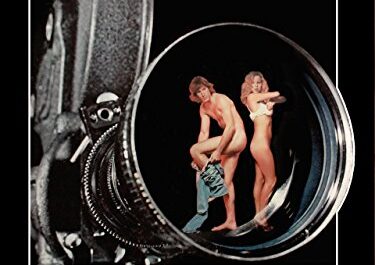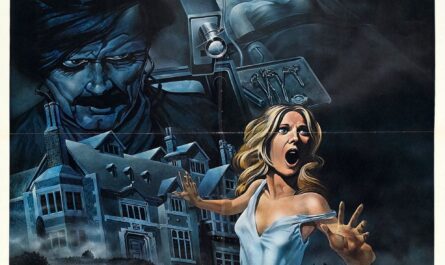Lizzy’s Take:
Well, after surviving Last Foxtrot in Burbank, I figured I owed it to myself to see the actual movie that inspired Charles Band’s fever dream of a parody. Enter Last Tango in Paris (1972), Bernardo Bertolucci’s infamous, controversial, and, let’s be honest, deeply unsettling tale of grief, sex, and power struggles.
👉 Recommended if: You’re a fan of raw, emotionally intense dramas with powerhouse performances—or you just really want to see where that awkward Last Foxtrot in Burbank intro came from.
🚫 Skip it if: You prefer relationships in your films to have any sense of emotional stability.

A Pit Stop in Paris (Because Burbank Didn’t Cut It)
After watching Last Foxtrot in Burbank, I felt it was only fair to go back to the source—Last Tango in Paris. And right away, the connection is obvious. The haunting, jazz-infused opening of Bertolucci’s film is almost directly mirrored in Last Foxtrot in Burbank—except, you know, way less dignified.
But while Band’s parody plays everything for cheap laughs and innuendo, Last Tango in Paris is a much darker, more complex film. Marlon Brando stars as Paul, a man drowning in grief after his wife’s suicide, and Maria Schneider as Jeanne, a young woman swept into his emotional whirlwind. Their relationship is built on secrecy, control, and self-destruction—hardly the romantic European getaway you’d expect from the title.
A Study in Emotional Damage
One of the most striking aspects of Last Tango in Paris is how both characters feel like they’re running from something. Paul uses sex as an escape from his grief, while Jeanne seems desperate to rebel against a life she feels trapped in. The result? A dynamic so toxic that even Charles Band couldn’t parody it properly.
Paul’s emotional outbursts, cruel detachment, and sudden moments of vulnerability create a character who is both deeply human and impossible to root for. And when he finally reaches a point of emotional openness, Jeanne has already been pushed too far. It’s a brutal portrayal of how unresolved trauma can turn a relationship into a battlefield.
How Does It Compare to Last Foxtrot in Burbank?
Honestly? Watching Last Foxtrot in Burbank first makes Last Tango in Paris feel even more surreal. Band’s parody takes only the most surface-level elements—Brando’s brooding presence, the infamous butter scene (which we are not going to discuss), and the general moodiness—without touching on the film’s actual themes. It’s like trying to parody Schindler’s List with fart jokes.
But the most fascinating thing about watching them back-to-back is realizing how bizarre it is that anyone thought this film needed a slapstick spoof. If anything, Last Tango in Paris already feels like an emotional horror film. No extra jokes required.
Should You Watch It?
If you’re interested in intense character studies, controversial cinema, or just want to see a Brando performance that isn’t being played for laughs, then Last Tango in Paris is worth the watch. But if you’re hoping for something with emotional resolution, healthy relationships, or any sense of comfort—consider looking elsewhere.
Final Verdict:
A haunting, brutal, and emotionally raw film that deserves its place in cinema history—but maybe not on your “casual movie night” list.




Reading this feels like tracing intricate patterns in sand, noticing every curve, texture, and shadow. Each phrase invites observation and reflection, fostering a mindful engagement with both the words and the space they create, producing an immersive and contemplative experience.